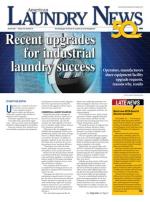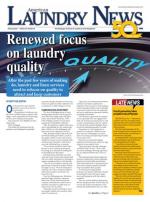Examining Cost Controls in Laundry & Linen Services (Conclusion)
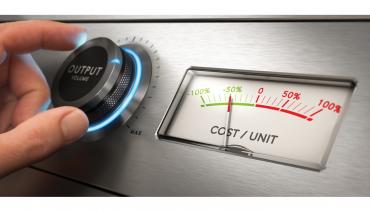
CHICAGO — It’s a fact of business: costs continue to rise.
From goods to products to services, laundry and linen service costs go up every year.
That’s why operators need to learn the true costs of processing linens and adjust so that the business can continue to put out clean, quality goods to benefit the business and its customers.
“Our basic management philosophy and corporate mission is ‘you can’t manage, what you don’t measure’ in our industry,” says Eddie Lefeaux, CEO of Westport Linen Services, a healthcare laundry in Baton Rouge, Louisiana.
Using this as a starting point, American Laundry News gathered information on some best practices for laundry operators to examine their costs per pound and customer and how to use that information to help ensure financial stability.
“One of the best ways to approach the cost per pound analysis is to look at it from something that everyone knows and in many cases brags about in their operation: pounds per operator hour (PPOH) production ratio,” says Doug Story, owner of MorganBrooke, a laundry consultancy in Sylva, North Carolina, has more than 35 years of experience working with industrial and institutional laundries.
“I have heard this talked about at trade shows and meetings, but something that I have not heard too much about for understandable reasons is the cost per pound per operator hour production ratio.
“PPOH is one of those great measures of productivity, but as part of our operations, shouldn’t we have a number that is also a measure of the cost per pound of those items being processed?”
The PPOH is the result of every operation in the laundry, Story says. It is the accumulative effort of everyone and every system in the plant.
The simple PPOH calculation is the total number of pounds processed divided by the labor hours required to produce the work.
“However, I look at it this way,” shares Story. “PPOH equals cart pack plus finishing (folders, ironers, dryers, etc.) plus washing process plus soil sort plus soil delivery.
“It is an accumulative process, if any one of these areas falters, the PPOH will suffer for the whole plant.”
Story moves from PPOH to the cost per pound per operator hour (CPPOH) as a comparative ratio for use by a laundry.
He says the simple calculation would be to take the total cost for the number of pounds processed and then divide it by the labor hours required to produce the poundage.
“However, I look at it the same way as we do the PPOH except that in each factor of the equation we are looking at how much it costs against the pounds processed,” Story points out.
“CPPOH equals cost per pound on a clean linen cart plus cost per pound through finishing plus cost per pound of the washing process plus cost per pound soil sort plus cost per pound soil delivery.”
He says that this is simplistic in that it just touches the final number, but in each of these numbers, there are key factors (depending on how a laundry has set up its financials and on how detailed it wants to do analysis). For example:
- Cost per pound soil delivery: Labor, truck, carts, fuel, etc. are a few of the costs against the goods being delivered.
- Cost per pound soil sort: Labor, equipment, slings, etc.
- Cost per pound washing process: Water, chemicals, steam, equipment, labor, etc.
“There is a lot of data gathering; however, if you do this analysis, you will have the whole picture of your operation broken down into two numbers,” Story says.
“Two numbers that can be used to measure the efficiency versus the costs of the operations. Efficiency is just not a measure of how much work one can produce, it is also a measure of costs and quality (rejects and returns).
“So, you might want to add rejects and returns to the metrics that are high on your daily ‘keep an eye on’ reviews.
“To those of us who really enjoy drilling down in the numbers, can you imagine how detailed you can get with today’s systems and how easy it would be to understand the impact of price or production changes will have on the economics of each area in your plant?
“This could be a valuable tool as we all work to manage our operations in very volatile times.”
Story shares an anecdote that illustrates his points.
“In Akio Morita’s (president and founder of Sony) book, Made In Japan, he told the story of how he had bought the rights to build and sell the small portable AM radio the U.S. company Panasonic had invented and didn’t think it would go anywhere,” he says.
“His company received orders for several hundred thousand from a U.S. retailer, and he and his engineers calculated that they could not produce those numbers at the quality level needed by the customer without spending a significant amount of money on the upgrades.
“So, rather than do that, he created a pricing structure that made lower volume orders cheaper than the higher volume orders of radios. The retailer liked that, and the rest is history. Panasonic died as an American company and Sony grew.
“This story tells a lot of things but in this case, increased production does not necessarily mean more efficiency in terms of costs, etc.”
Story says that cost per customer should be part of a laundry’s strategic planning within the business.
Each of the factors that follow should be part of an operation’s goals and objectives, where the laundry is setting goals and then comparing the actuals against the goals.
“A concept that many young businessmen find most surprising to learn is that one of the most expensive components of doing business is adding or putting on new customers,” he says.
“Knowing this adds a new dimension to the analytics one must look at in their efforts to increase the sales and revenue of a free-standing laundry operation.”
A few factors Story suggests a laundry should look at as it develops its sales strategies include:
- Capacity Utilization Rate (CUR). This is a measure of actual output versus potential output. If the CUR is at 100%, the laundry will have to look at other avenues, e.g., adding a shift, more equipment, etc., increasing the cost per new customer in terms of these additions, but perhaps only for the short term as production builds. If the CUR is 50%, then the addition of new customers may aid in mitigating the cost of the new additions by the savings achieved at increasing the CUR/productivity in the operation (e.g., 10 equally sized customers processed over eight hours versus 12 equally sized customers processed over eight hours in the same operation).
- Customer Acquisition Cost. The total investment in dollars to acquire a customer and generate revenue. This includes all costs, marketing, sales salaries, entertainment, etc.
- Customer Retention Rate or Churn Rate. A measure of the customers that have been retained and lost over a given period.
- Accumulative (or Lifetime) Customer Value. Amount of revenue generated by each customer. This can aid in understanding what it takes to keep a customer and the development of new ideas and products a laundry can provide that can aid the customer and build revenue for the operation as well.
Story also recommends that laundries employ Customer Feedback programs that measure the good things and perhaps the not-so-good things customers say or feel about the company.
“These feedback programs can generate scores that are indicative of your overall image to the customers in terms of your product, quality and service,” he says.
“Hopefully, your organization will gain insight from this data and use it to take enhancement actions for the good things and corrective actions on those that are still not quite perfect.”
Story notes that J. Paul Getty, once the richest man in the world, is credited with saying, “Take care of the pennies, and the dollars will take care of themselves.”
“In application, these ratios, values and feedback programs we discussed are a way to take care of the pennies as they are being used and generated in the operations and with the customers,” he says.
The factors Story shared can be broken down into three areas with seven metrics.
“There are many more, but these can be some of the key metrics that in my opinion contribute to all the other financial metrics,” he says.
- Operations: PPOH and CPPOH are ways to measure the efficiency and productivity of an operation and put a financial number on the operational parts (i.e., soil sort, wash aisle, etc.) of the process as well as on the whole process.
- Sales Planning: The capacity utilization rate is a method that can put a focus on what is needed in terms of new sales to improve the CUR or perhaps even suggest additional production capacity to meet new customer sales and/or organic growth sales expectations.
- Customer Metrics: Knowing customer acquisition costs, customer retention rate and accumulative (or lifetime) customer value are just a few of the financial factors that if kept good track of will give a solid picture of how things are going “out there” as well as an early warning system in the event there are issues building within the plant and/or the customer base. The customer feedback program is not a financial factor, but it can be an aid in how you move forward and how you allocate resources within an organization.
“It is my opinion that having these seven metrics at your disposal on a continuous basis will give you the information needed to respond to almost any issue within the plant as well as with your customer base,” says Story.
The bottom line is that laundry operators need to go beyond measurements and cost analyses and make use of the information to help ensure the financial stability of the business.
“If expenses exceed budgeted allowances, management must investigate, respond and react with a corrective plan of action to meet the targets,” Lefeaux points out.
“For example, when diesel fuel rises, delivery route efficiency must be examined and maximized to achieve peak optimization.
“Sometimes routes will be consolidated or delivery frequency may be modified to complete the tasks.”
“The gathered information should tell the operator exactly where and how to act and where and how to reduce losses or improve profitability,” says Rudi Moors, a 32-year laundry industry veteran and founder of Beyond Washing, a strategic services consultancy in Greenville, North Carolina. “It will allow the operator also to benchmark with the industry and/or within the own group (if consisting of more than one location).
“Is a price increase required and if so, how much? General or rather per individual customer(s)? Perhaps per item, overall or for certain customers? Does the operator need to let go of non-performing employees? Or invest in new equipment with a strong ROI? Are certain costs need to be brought under control? With the help of long-term vendor partners? And so on.
“Of course, other parameters like AR (accounts receivable) and AP (accounts payable) need to be well managed. All measures should establish or increase profitability.”
Moors points out that if a laundry is losing or not making enough money with a customer and there’s nothing that can be done about it (costs are under control, a general or selective price increase is not accepted), then the laundry should let go of the customer.
“The race to the bottom must come to an end,” he says. “Our industry needs to start putting out decent prices leading to financially healthier operations.”
Click HERE to read Part 1 about the importance of measuring key indicators.

Standard Textile Launches Take-Back Recycling Program

Examining Cost Controls in Laundry & Linen Services (Part 1)

TRSA Advocates for Reusable PPE, PFAS Funding

Cost Control in Motion for Laundry/Linen Delivery

Cultivating Trust in Laundry Teams (Conclusion)

Cultivating Trust in Laundry Teams (Part 1)

Record-Breaking Attendance at ALM’s 2024 IMPACT Conference

Dialing in Chemical Representative/Laundry Relationships (Conclusion)

Xos Accelerates Growth with Acquisition of ElectraMeccanica

Dialing in Chemical Representative/Laundry Relationships (Part 1)
Podcasts for You
Columnist at Large: Meet the Man Behind the Words

Get to know Eric Frederick, who has written for American Laundry News for more than 30 years and spent 44 years in the industry.
Laundry Hiring and Training

Sylvia Williams, human resources manager for Prudential Overall Supply, a uniform and facility services company headquartered in Irvine, California, joins us to talk about strategies for seeking out employee candidates and training them for long-term growth.
Effective Laundry Plant Tours to Gain Customers

Guest Troy Lovins, founder and CEO of Performance Matters, talks about how opening the laundry plant doors and showing off what makes an operation great can turn potential customers into actual customers.
From the Research Center
Water Recycling in Commercial Laundry
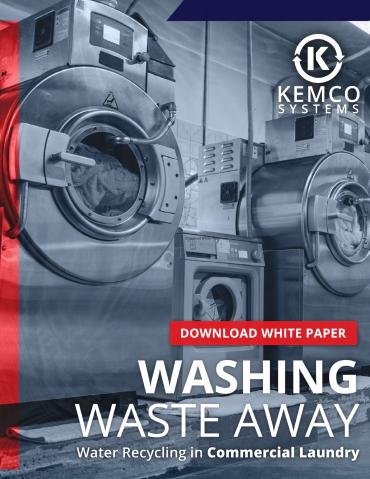
Laundry Design & Construction: Creating the Ideal Workflow

Laundry Chemicals & Dispensing: Finding the Right Chemistry

Latest Digital Editions
Digital EditionAmerican Laundry NewsApril 2024
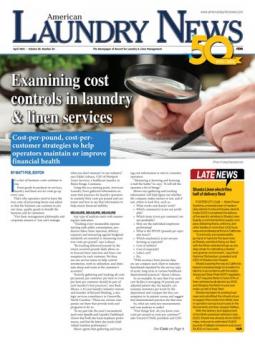
- Examining Cost Controls in Laundry & Linen Services
- Improvements are Constant in the Laundry Game
- Dialing in Chemical Representative/Laundry Relationships
- Cultivating Trust in Laundry Teams
